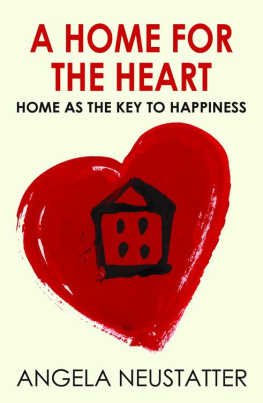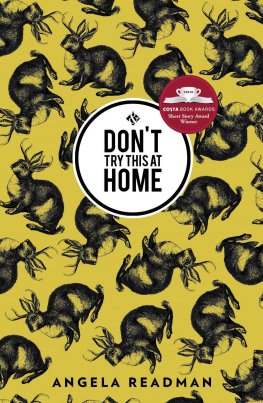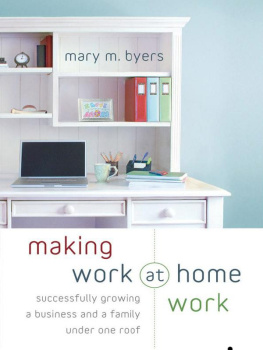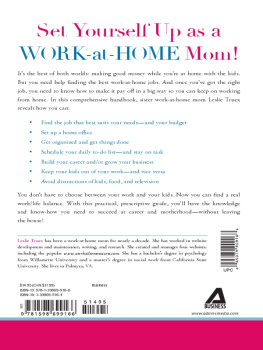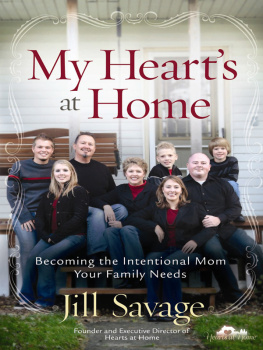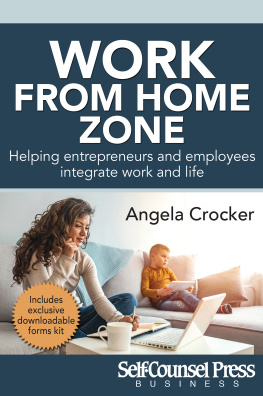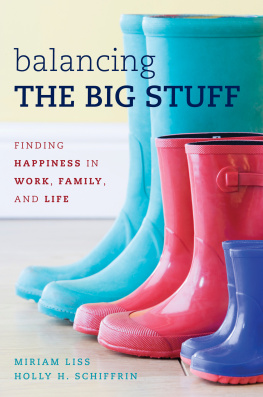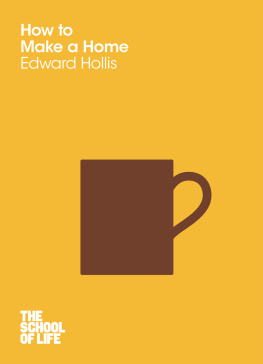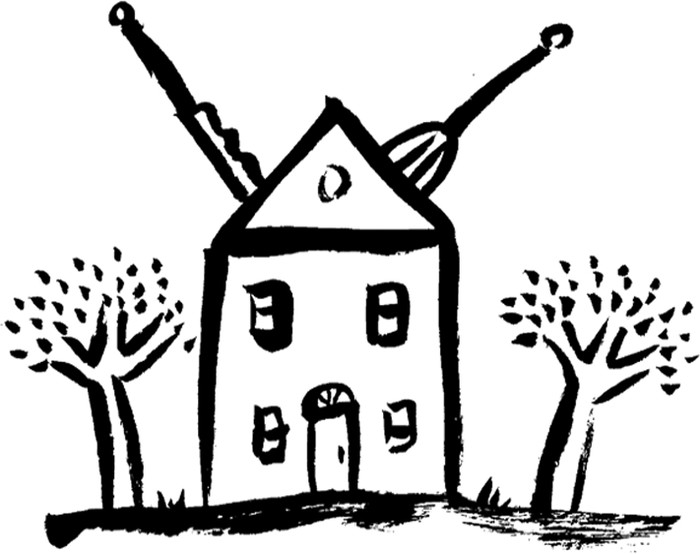This book grew from my own experience of learning how much home mattered when Olly, my husband and I, got to the point of discussing separating. The realization that we were contemplating selling up which would mean ditching the home we had done up from a wreck with sweat and tears if not blood, was a stark reality check. This was the place in which we had lived most of our childrens lives with them, where we had had monumental rows and conversely some of our happiest and most formative moments. The realization of just what would be lost if we couldnt do better than all this destruction was a kind of epiphany. We needed to find a more constructive way of sorting out our troubles than upping sticks and abandoning our cherished home.
I was telling this to my publisher, explaining how it had set me thinking, exploring the ways in which home is such a vital root in life, and yet how it has been so diminished in the last three years of pressurised consumerism, conspicuous consumption, the idea that individualism tops community, privacy is primary. I jested that home could be the new therapy and he ran with the idea, asking me to write this book.
I do not mean therapy in the clinical sense. I have aimed in the eleven chapters to look at what home means and why it matters for our psychological and physical well-being, happiness, authenticity, connectedness, because I believe understanding these may encourage us to think about the many ways home is so very significant.
Exploring this theme, I look at the ways we may pull away from and damage the chance of home being a root in our lives.
Running through the book are my own reflections on how and why I have come to see home as of primary importance, yet a thing we too easily undervalue.
You will see a good deal of emphasis in A Home for the Heart on the important role home plays in supporting and enhancing family life, on how if we invest in it and appreciate it well enough, it may hold us steady through the difficult times, or offer opportunity for a shift in emphasis as it did for me and Olly. It may mean families can live to enjoy later life, and lived history, together in their home.
Yet I need to offer a caveat. I am not talking of the family as the structure (mum, dad, two-point-something children) which some believe is the antidote to Broken Britain. I see solutions in the idea of Home rather than in one type of family. While accepting that the traditional family has much to offer, my aim has been to explore through my own and others experiences, prejudices and pleasures, the meaning of home in a broad sense for all of us who live together with one or more people. (After all, parents whose children have left the home, arent suddenly a non-family or homeless because there are no children left!) I aim to bring a perspective that puts the home at a very central place in our lives in a way I have not found done elsewhere.
I begin with the story of how Olly and I chose Separate Togetherness the title of the first chapter within our house. Alongside this are stories of other people I have interviewed, who have found ways to bring space into their relationships through their homes.
Among those who have talked of their experience of the meaning of home are the writer Allison Pearson, the entrepeneur Jonathan Self, the human rights lawyer Helena Kennedy and her daughter Clio, the journalist and social commentator Lynsey Hanley, Dame Elisabeth Mudoch, the architect Christopher Day.
I consider what it means when long working hours demand the bulk of our most animated and energetic hours away from home, so that what we have to offer those we share home with is all too often a depleted self, the scrag end of ourselves. Is prioritizing home a solution or too great a sacrifice if it means curtailing an ambitiously pursued career?
What happens when our relationships go into hell and chaos mode and we become emotional terrorists in the home? And how may involving ourselves more closely in the home be a healing process? These are the subjects of the chapter A Home to Be In.
In our age of celebrity showman/womanship buying hugely priced homes is the name of the conspicuous consumption game. And with it the message is beamed out that somehow these celebrities can buy a greater quality of happiness than us less well off mortals. In Trading Up I look at this phenomenon, the impact it has on our feelings about home, the myths embodied in the message
In the chapter Not Forsaking all Others I observe the growing pressure for society to relax its attitude to infidelity and sexually broader arrangements than monogamy polyamory and honestly open marriages. How do homes keep intact in these arrangements, when the strait-jacket of monogamy is undone?
In the Best Interests starts from the position that home is the place children are likely to experience the most significant part of their growing years. So how we organize and manage or mismanage their young lives at home, the place that, at best they trust they are lovingly cared for, is all important.
In A House Is Not a Home I look at when a home breaks, the affect on children and adults and the best and worst of how people manage to keep children in mind and a sense of home intact, during the fraught business of separation and divorce.
The last three chapters deal with the way homes are used in the 21st century. There are ever more people looking for ways to live that offer support and friendship but also autonomy, that will bring us back to a connectedness that seems to be diminishing.
In We Want to Be Together I explore the growing, contemporary, cohousing movement, which I term the elder sibling of the earlier commune movement because it is about combining autonomy and privacy along with communality.
In Building Dreams I talk to people about the meaning of creating a home for themselves built around an ideology, and how far this affects their personal relationships, the experience of their homes.
Finally there is my chapter Friendship Families. By this I mean people who have committed to living together with friendship as the essence of the arrangement. So there are multi-generational families who have chosen to make common cause either under one roof or living so close they might as well be under.
There are single parents realizing that setting up a home with others can improve life dramatically; people who have chosen to buy or rent homes together because it is more environmentally friendly and comforting than living alone; couples who were once together, broke up but in later life have come back together as friends.
I was standing over Olly, seated in his favourite chair in front of the television screen. I had one hand on my hip; with the other I gesticulated angrily towards the pictures on screen. I had just arrived home from a demanding job of work, jaded and fraught. Why should I have to find myself competing with the television for my husbands attention? I was in small child mood and primed to be put out very easily.
The best thing I could have done would have been to take myself off to the bedroom to spend a bit of time, on my own, recuperating after the jagged business of travelling across London by public transport. Instead I went straight into our sitting room to find Olly watching TV. It infuriated me. I didnt like the idea of Olly sitting there watching the drivel that seems to fill most of the channels early evening.

